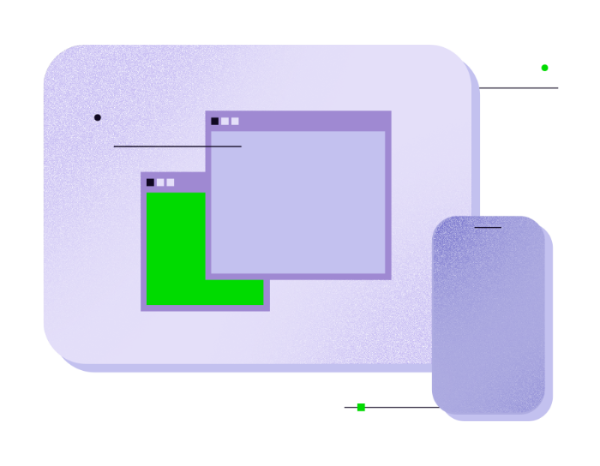THE CHALLENGES OF ICT TOOL SPRAWL
ICT monitoring tool sprawl results in a complex and fragmented monitoring environment. ICT monitoring tool sprawl can create several challenges:
- Complexity: With multiple monitoring tools in place, IT teams may find it difficult to manage and maintain the monitoring environment. They may need to learn and use different tools for different aspects of the environment, resulting in a fragmented monitoring environment.
- Lack of visibility: With data spread across multiple monitoring tools and systems, IT teams may lack a unified view of the ICT landscape. This can make it difficult to identify issues, diagnose problems, and track performance metrics.
- Increased costs: Multiple monitoring tools require multiple licenses, maintenance costs, and support contracts. This can increase costs and make it more difficult to manage IT budgets effectively.
- Poor communication: Different teams using different tools can lead to poor communication and collaboration between teams. This can lead to confusion and delays in problem resolution.
- Security risks: Multiple monitoring tools can create security risks, as they may not be integrated and may not communicate with each other effectively. This can make it difficult to detect and respond to security threats in a timely manner.
In addition to the challenges of classical tool sprawl, the move to the cloud adds challenges that must be addressed by monitoring too.
NOW, WHAT IS ICT MONITORING CONSOLIDATION?
ICT (Information and Communication Technology) monitoring consolidation refers to the process of integrating and streamlining different monitoring tools and systems used for managing an organization's ICT landscape.
In many organizations, different teams use different monitoring tools and systems to track various aspects of their ICT resources such as network performance, server uptime, application availability, security events, and more. This can result in silos of information and make it challenging to get a comprehensive view of the overall health and performance of the ICT environment.
ICT monitoring consolidation involves bringing all these disparate monitoring tools and systems together into a single, centralized platform, which provides a unified view of the ICT environment. This platform may include features like real-time monitoring, alerts, notifications, and reporting, allowing IT teams to quickly identify and address issues as they arise.
By consolidating ICT monitoring, organizations can improve efficiency, reduce costs, and enhance their ability to respond to issues in a timely manner. It also provides a holistic view of the entire ICT, allowing organizations to identify trends and patterns that can help them make more informed decisions about their ICT environment.
WHAT ARE THE APPROACHES FOR MONITORING CONSOLIDATION?
The technologies for monitoring have evolved and will make consolidation easier and non-disruptive. Instead of trying to consolidate all tools in one, there is more and more consensus to use new technologies to consolidate the data rather than the tools. The data consolidation is more powerful as it brings more opportunities to exploit the data using analytics and AI models, which is not possible with the data in different disparate tools.
The technologies that can be used for consolidation are:
- Consolidate in dashboards instead of trying to consolidate all underlying tools. This is the easiest way of consolidation and the least costly.
- Consolidate the underlying data in one Time Series Database. As all monitoring metrics are by nature time series, this could be a good idea for your metrics.
- Consolidate your monitoring in a platform instead of individual tools. A platform could both have the dashboards and the time series database included to provide consolidated data and dashboards.
THE USE OF DASHBOARDS FOR MONITORING CONSOLIDATION
Dashboards can be a valuable tool for ICT monitoring consolidation. Dashboards provide a visual representation of performance metrics and other key indicators, which can help IT teams quickly identify and respond to issues. Here are some of the benefits of using dashboards for monitoring consolidation:
- Real-time visibility: Dashboards provide real-time visibility into the performance of ICT components. This allows IT teams to quickly identify issues and take corrective action before they become critical.
- Centralized monitoring: Dashboards can be used to consolidate data from multiple monitoring tools and systems into a single view. This provides IT teams with a unified view of their ICT, which can simplify monitoring and troubleshooting efforts.
- Customization: Dashboards can be customized to display the metrics and data that are most relevant to a particular team or department. This allows different teams to monitor the aspects of the infrastructure and applications that are most important to them, without being overwhelmed by irrelevant data.
- Improved communication: Dashboards can be shared with stakeholders across the organization, including senior management, IT teams, and business units. This can improve communication and collaboration, as stakeholders can view the same data and metrics, and work together to address issues and improve performance.
- Performance tracking: Dashboards can be used to track performance metrics over time, allowing IT teams to identify trends and patterns in the data. This can help teams make informed decisions about optimization, capacity planning, and resource allocation.
By using dashboards, IT teams can simplify monitoring efforts, improve decision-making, and ensure continuous optimization of their ICT.
TIME SERIES DATABASE FOR ICT MONITORING CONSOLIDATION
Time series databases are specifically designed to store and manage time-stamped data, which makes them well-suited for ICT monitoring consolidation. Here are some of the benefits of using a time series database for ICT monitoring consolidation/
- Efficient storage and retrieval: Time series databases are optimized for storing and retrieving time-stamped data, which makes them more efficient than traditional databases when it comes to storing large amounts of time-series data. This allows organizations to store and analyze large amounts of data without having to worry about scalability issues.
- Fast querying and analysis: Time series databases are designed to handle fast and efficient queries for time-based data. This means that they can quickly process large amounts of data and provide near-real-time analysis of performance metrics and other key indicators.
- Flexible data modeling: Time series databases can handle a variety of data types, including numeric, string, and boolean data. They can also handle complex data structures, such as nested objects and arrays. This makes them flexible enough to handle a wide range of data types and structures commonly found in ICT monitoring environments.
- Easy integration: Many time series databases have built-in APIs that allow them to integrate easily with other monitoring tools and systems. This makes it easy to consolidate data from different monitoring tools into a single platform, which can simplify ICT monitoring consolidation efforts.
- High availability and reliability: Time series databases are designed for high availability and reliability, which means they are less likely to experience downtime or data loss. This makes them a reliable choice for organizations that need to ensure continuous monitoring of their ICT.
Time Series Databases can simplify integration with other monitoring tools and systems and provide high availability and reliability to ensure continuous monitoring of ICT.
CONSOLIDATE YOUR MONITORING IN A SAAS PLATFORM
A monitoring consolidation using dashboards, or a time series database are options, but you can also take a different approach all together by integrating as much as possible in a monitoring platform. More and more the monitoring platforms are provided by specialist providers as a service. This way, you will not be troubled with the set-up and maintenance of the platform and you can integrate the monitoring data that you need. You can start small and grow as you need.
An ICT monitoring platform typically includes several key components, such as data collection agents, a centralized database or data store, a visualization layer, and analytics capabilities. The data collection agents are responsible for collecting data from various sources, which is then stored in the centralized database or data store. The visualization layer provides a dashboard or interface that allows IT teams to view and analyze the data, while the analytics capabilities provide advanced data analysis and visualization features, such as trend analysis, forecasting, and anomaly detection.
A monitoring platform can be a valuable tool for ICT monitoring consolidation because:
- Centralized management: A monitoring platform can provide a centralized view of your entire ICT, regardless of the number or type of monitoring tools used. This makes it easier for IT teams to manage and troubleshoot issues across the ICT environment, including applications, cloud, full stack and on-site resources.
- Streamlined data collection: A monitoring platform can collect data from multiple sources and tools, which can eliminate the need for manual data collection and consolidation. This can save time and reduce the risk of errors.
- Customizable alerts: A monitoring platform can be configured to generate alerts based on specific conditions or thresholds. This can help IT teams identify issues and take corrective action before they become critical.
- Scalability: A monitoring platform can scale to meet the needs of large and complex ICT environments. This can help organizations manage growth and ensure that the monitoring environment remains effective.
- Integration with other tools: A monitoring platform can integrate with other tools and systems, such as ticketing systems, reporting tools, and automation tools. This can improve communication and collaboration across different teams and departments.
- Data analysis: A monitoring platform can provide advanced analytics and data visualization capabilities, allowing IT teams to identify trends, patterns, and anomalies in the data. This can help teams make informed decisions about infrastructure optimization, capacity planning, and resource allocation.
By using a monitoring platform, IT teams can achieve real-time visibility, streamline data collection and analysis, and improve communication and collaboration across the organization.
CAN MONITORING CONSOLIDATION BE EASILY REALIZED?
Monitoring consolidation is not all or nothing, it is a balance between usability and the number of tools that you need for monitoring. It needs a practical approach towards the goals that are set for monitoring, and it is certainly not the goal to stay with one tool, but to consolidate the tools in a working environment for everybody.
So, can it be easily realized? In the correct circumstances, it will not be difficult to achieve a consolidation either in-house or as a SaaS solution.


